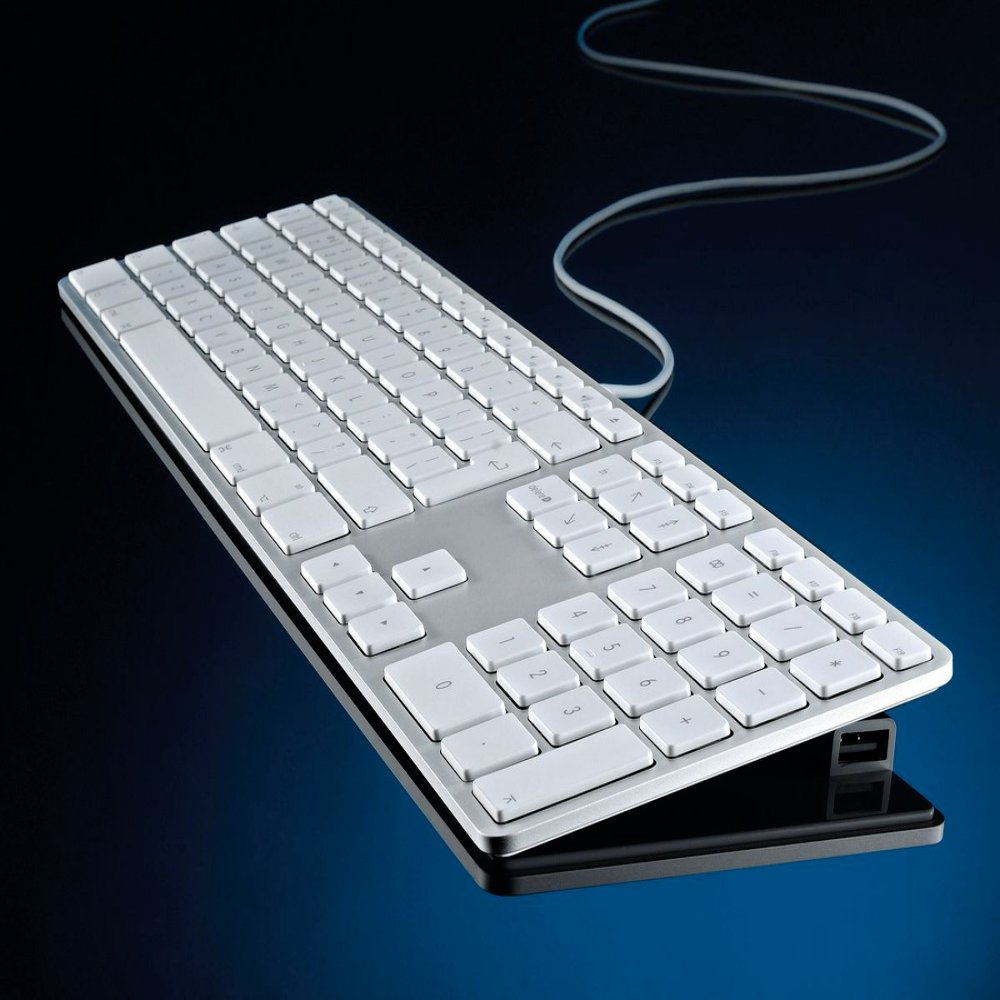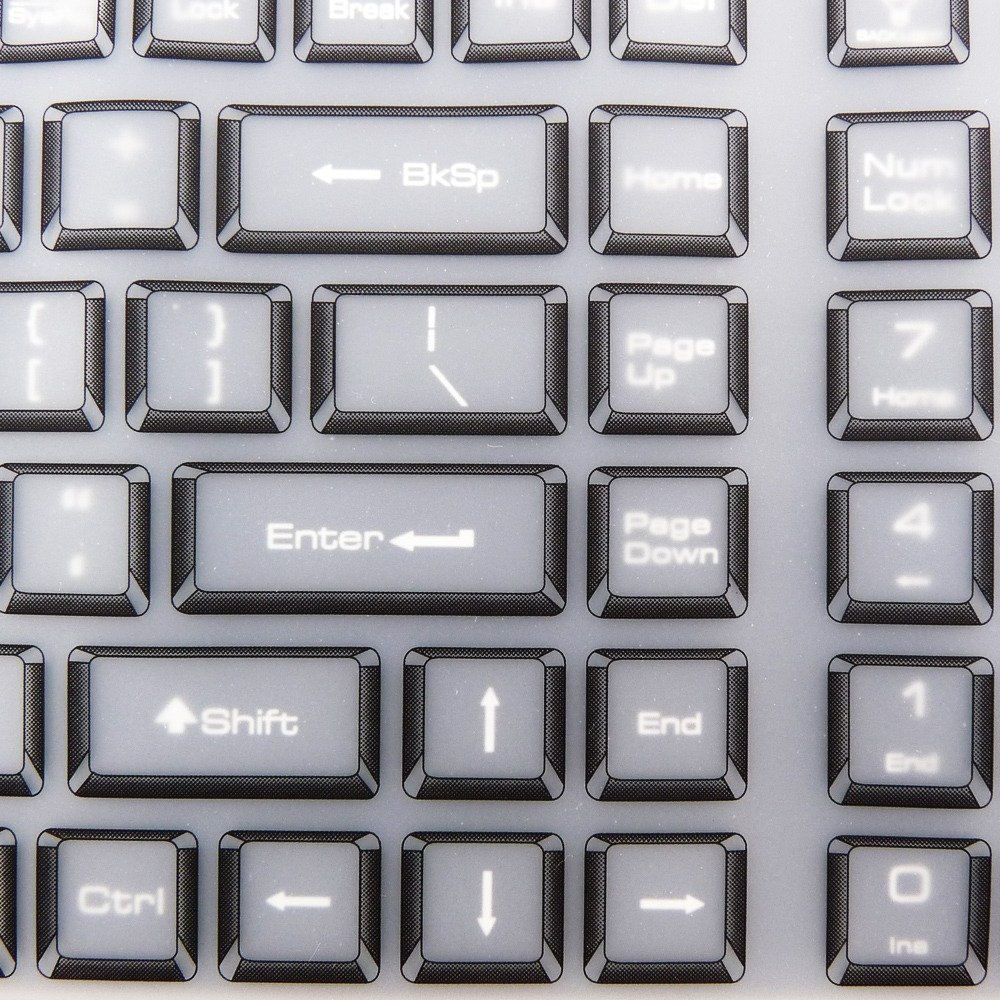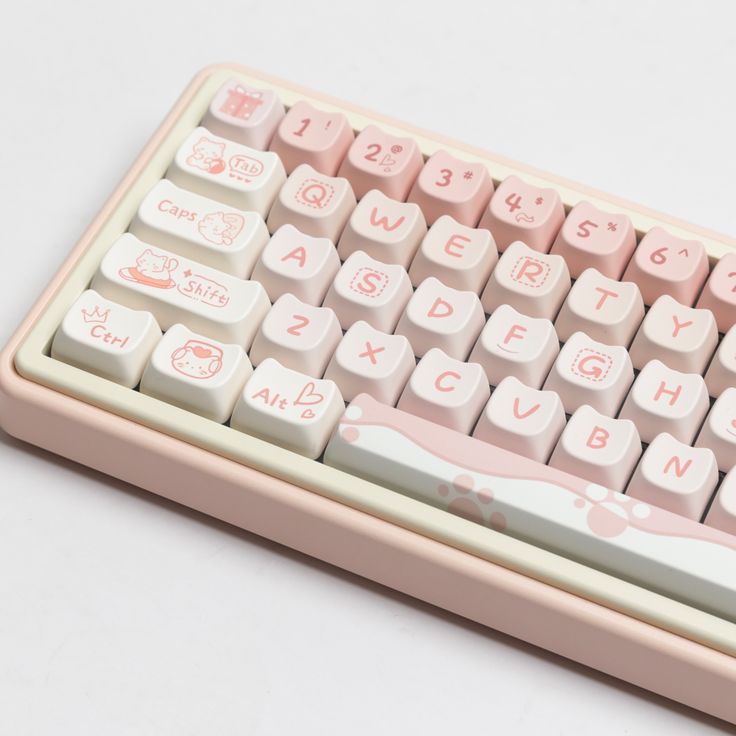Evolution of Membrane Keyboards
Membrane keyboards have evolved significantly over the years. Initially, these keyboards were simple and mostly used in low-cost consumer electronics. Their design consisted of a flat, flexible surface printed with conductive ink. This basic structure allowed for affordable production but had limited tactile feedback.
Over time, advancements in materials and technology greatly enhanced their functionality. Manufacturers started incorporating dome switches under each key. These switches improved the tactile feedback, making typing more comfortable and accurate. Additionally, the integration of LED backlighting and programmable keys added more value, catering to gamers and professionals alike.
The transformation of membrane keyboards continued with the introduction of improved waterproofing capabilities and anti-ghosting features. These enhancements made them more durable and reliable for intense, fast-paced typing sessions. Today, membrane keyboards remain a popular choice due to their cost-effectiveness and ongoing technological improvements. They serve a broad range of users, from everyday typing tasks to specialized professional use.

Key Features of Modern Membrane Keyboards
Today’s membrane keyboards offer a variety of advanced features that enhance both user experience and functionality. Here are some key characteristics:
- Improved Tactile Response: Modern membrane keyboards have overcome the traditional lack of tactile feedback. Manufacturers use high-quality dome switches that provide a better ‘click’ feel without the stiffness associated with mechanical keyboards.
- LED Backlighting: Many membrane keyboards now feature customizable LED backlighting. This feature not only makes the keys visible in low light conditions but also adds an aesthetic appeal, especially popular among gamers.
- Programmable Keys: Programmability is another core feature. Users can configure individual keys to perform various functions, which is particularly useful for gamers and professionals who use complex software.
- Durability and Water Resistance: Enhanced materials and design techniques have increased the durability of membrane keyboards. Many models are now spill-resistant or even waterproof, ideal for users who might face liquid spill incidents.
- Anti-Ghosting Capability: Ghosting occurs when multiple keys are pressed simultaneously, and the keyboard fails to register some key presses. Advanced membrane keyboards incorporate anti-ghosting technology, which ensures that all key presses are registered accurately, providing a reliable performance during high-speed typing or gaming sessions.
- Portability: Most membrane keyboards are lightweight and slim, making them easy to transport compared to their bulkier mechanical counterparts. This makes them an excellent choice for mobile setups or individuals who frequently change workspaces.
Each of these features contributes to why membrane keyboards are still widely used despite the popularity of mechanical alternatives. They effectively balance performance, comfort, and cost, making them suitable for various typing needs.
Membrane vs. Mechanical Keyboards: A Comparative Analysis
When it comes to choosing a keyboard, one major decision is between membrane and mechanical types. Each has distinct characteristics that cater to different user preferences. Here’s a comparative analysis to help understand the differences.
Key Press Mechanism: Mechanical keyboards use individual switches under each key, providing a distinct click and tactile feedback. Membrane keyboards, on the other hand, have a single rubber or silicone layer that activates keypresses, offering a softer feel.
Durability: Mechanical keyboards typically boast a longer lifespan due to their sturdy build. Membrane keyboards can wear out quicker, but advanced materials have extended their durability.
Noise Level: Mechanical keyboards tend to produce more noise with each keystroke. Membrane keyboards are quieter, which may be preferable in shared workspaces or quiet environments.
Maintenance: Cleaning a mechanical keyboard can be more involved since keys can be removed for thorough cleaning. Membrane keyboards are harder to clean deeply but resist dirt and spills better due to their sealed design.
Price: Generally, membrane keyboards are more affordable, making them a budget-friendly option compared to the costlier mechanical keyboards.
Typing Speed and Precision: Gamers and typists often favor mechanical keyboards for fast and precise typing. However, with improved anti-ghosting technology, membrane keyboards also offer reliable performance.
Customizability: Mechanical keyboards often provide more options for customization, including switch types and keycaps. Membrane keyboards have less flexibility, but programmable keys add some level of personalization.
In conclusion, the choice between membrane and mechanical keyboards comes down to personal preference, usage scenario, and budget. Membrane keyboards, with their quiet operation and cost-effectiveness, cater to everyday users and those who prefer a softer key press. Mechanical keyboards appeal to those who need tactile feedback, durability, and customization for intensive gaming or heavy typing duties.

The Role of Materials in Membrane Keyboard Durability
The durability of membrane keyboards hinges on the quality and type of materials used. Here we delve into factors that affect their longevity.
Materials Used
Manufacturers select materials that resist wear and tear. Common choices include high-grade silicone or rubber for the membrane layers. These materials withstand repeated keystrokes and maintain their elasticity over time.
Advances in Material Technology
Companies have developed new compounds to extend the lifespan of membrane keyboards. Innovations such as UV-resistant and heat-tolerant coatings protect against environmental damage.
Impact on Keyboard Lifespan
Better materials lead to longer-lasting keyboards. With improved substance quality, users enjoy a reliable typing experience for an extended period.
Membrane Coating Enhancements
Coatings applied to the membrane improve resistance to oils from fingers and accidental liquid spills. Such advancements have made keyboards more user-friendly and resilient.
Importance of Material Flexibility
Flexible materials prevent keys from becoming stiff. They ensure a consistent and comfortable typing response even after long-term use.
The advancement of materials used in membrane keyboards has been a pivotal factor in improving their durability. With high-quality membranes and protective coatings, these keyboards prove to be a robust option for everyday typing demands.
Innovative Technologies in Membrane Keyboard Design
Membrane keyboard technology has seen significant advancements, incorporating innovative features for enhanced user experience.
Touch Sensitivity Adjustments: Latest designs include touch sensitivity control, allowing users to customize the actuation force for keystrokes. This leads to personalized comfort and reduced finger strain.
Hybrid Switches: Some membrane keyboards now integrate hybrid switches, blending the benefits of mechanical and membrane types. These hybrids offer a soft touch with a mechanical-like click, appealing to various preferences.
Multi-Functionality: Enhanced keyboards come with additional functions like touchpads or gesture controls integrated into the keyboard itself. This multi-functionality streamlines workflow and reduces the need for extra peripherals.
Eco-Friendly Options: With a growing environmental focus, manufacturers are exploring sustainable materials. This innovation supports reducing electronic waste and lowering carbon footprints.
Smart Connectivity: The inclusion of Bluetooth and wireless technologies allows for clean, wire-free setups. Smart connectivity also supports the use of the keyboard with multiple devices seamlessly.
Noise Reduction Technologies: Research into materials that dampen keystroke noise has led to quieter membrane keyboards. This benefits users in shared spaces who require silent typing.
Backlighting Innovations: Beyond standard LED backlighting, new membrane keyboards feature RGB lighting with extensive customization options. Users can create personalized lighting profiles, enhancing aesthetics and functionality.
By incorporating these technologies, modern membrane keyboards cater to a broad audience, offering customized experiences, cutting-edge features, and increased sustainability.

Customizing Your Membrane Keyboard Experience
Membrane keyboards come with several customization options. These adjustments can significantly improve your typing comfort and enhance your overall experience. By fine-tuning settings and utilizing available features, you can tailor your membrane keyboard to fit your specific preferences. Let’s explore how you can modify your typing experience with a membrane keyboard.
Adjusting Key Sensitivity
You can often change the touch sensitivity in modern membrane keyboards to suit your typing style. This means you can set the resistance of the keys to be firmer or softer depending on your comfort level.
Programming Macro Keys
Many membrane keyboards have programmable macro keys. These can be configured for executing multiple actions with a single key press. This is specially helpful for streamlining tasks and increasing typing efficiency.
Choosing Backlighting Options
Customizable LED backlighting is available in various models. Choose colors and patterns that match your aesthetic or improve key visibility in low light conditions.
Selecting Keycaps
Some membrane keyboards allow you to change keycaps. Swap out your standard ones for different colors or materials to personalize the look of your keyboard.
Software Customization
Utilize accompanying software to remap keys, create profiles for different uses, or adjust the rate of key repeat. Software enhancements can refine your typing experience to match your workflow.
Through these customization options, you can optimize your membrane keyboard for a more pleasant and productive typing journey. And with the added benefit of an attractive price point, membrane keyboards continue to provide a great balance of functionality and personalization.
Maintenance Tips for Membrane Keyboards
Maintaining your membrane keyboard is crucial for ensuring its longevity and optimal performance. Here are some simple tips that you can follow:
- Regular Cleaning: Gently wipe the surface of your keyboard with a soft, damp cloth to remove dust and debris. Be sure to power off the device before cleaning.
- Avoid Spills: Keep liquids away from your keyboard to prevent damage. If an accident occurs, turn off the keyboard immediately and blot the spill, then allow it to dry completely.
- Use of Air Dusters: Compressed air dusters can dislodge particles trapped between the keys. Use short bursts of air to avoid damaging the membrane.
- Soft Touch: Don’t press the keys too hard. Using a soft touch can prevent wear and tear on both the keys and the underlying membrane.
- Keep it Covered: When not in use, cover your keyboard to protect it from dust accumulation. This can also help prevent accidental spills.
- Check Cable Connections: For wired membrane keyboards, ensure that the cable is not frayed and that connections are secure to prevent connectivity issues.
By applying these maintenance tips, your membrane keyboard can retain its responsiveness and last longer. This routine care greatly contributes to a satisfactory typing experience with your chosen membrane keyboard.
Future Trends in Membrane Keyboard Development
As we glimpse into the future of membrane keyboard development, several key trends emerge, each promising to refine the user experience further.
Embracing AI Integration
Membrane keyboards may soon incorporate AI-driven technologies to predict typing patterns or provide user-specific suggestions. This could speed up typing tasks and enhance accuracy.
Advancement in Materials
Future developments might introduce even more durable and responsive materials, possibly leveraging nanotechnology to create ultra-thin, yet robust, membrane layers.
Enhanced Customizability
Expect to see a push towards greater customization. Users may be able to adjust even more aspects of their keyboard, from key sensitivity to tactile feedback, through user-friendly interfaces.
Wireless Charging
With the increase in wireless tech, future membrane keyboards may support wireless charging, eliminating the need for cables and further streamlining workspace setups.
Improved Ergonomics
Designs focusing on ergonomics will likely become more prevalent, reducing the risk of strain from prolonged typing and conforming to natural hand positions.
Sustainable Practices
As environmental concerns grow, manufacturers will likely adopt eco-friendly production methods, use recyclable materials, and offer options for easier disassembly and recycling.
These forward-thinking advancements in membrane keyboard technology will aim to meet evolving user demands for comfort, efficiency, and sustainability. Membrane keyboards are poised to remain an essential tool for typing enthusiasts and professionals alike, combining tradition with innovation. Keeping the focus on user-centric improvements ensures that the membrane keyboard will continue to be a popular choice in the technology marketplace.